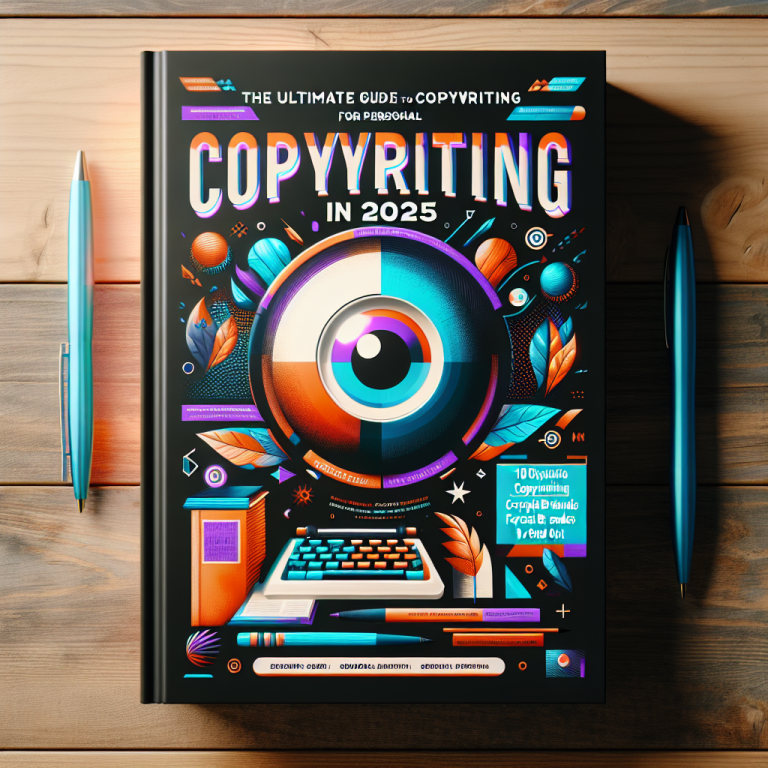10 Effective PAS Formula Examples to Boost Your Marketing in 2025
- 1. The Classic PAS Formula
- 2. PAS with Data-Driven Insights
- 3. PAS for E-Commerce Campaigns
- 4. PAS in Email Marketing
- 5. PAS for Social Media Ads
- 6. PAS for B2B Marketing
- 7. PAS with Personalization
- 8. PAS for Product Launches
- 9. Combining PAS with other formulas
- 10. Analyzing Successful PAS Examples
In the world of marketing, persuasive communication is key to capturing attention and driving conversions. One of the most reliable frameworks for crafting compelling messages is the PAS formula examples. Recognized globally for its simplicity and effectiveness, the PAS (Problem-Agitate-Solution) formula continues to be a favorite among marketers in 2025 for creating engaging campaigns. Whether you’re designing landing pages, social ads, or email sequences, mastering various PAS formula examples will help you boost your marketing results significantly.
1. The Classic PAS Formula
Understanding the Basics
The classic PAS formula follows a simple pattern: identify a problem your audience faces, intensify that problem to evoke emotional responses, and then present your product or service as the ideal solution. This structure taps directly into human psychology, making messages more persuasive and memorable.
For example, a home cleaning service might start with, “Tired of spending weekends cleaning? That mess is overwhelming and stressful.” Then, they introduce, “Our professional cleaning team handles all the mess so you can enjoy your free time.” This straightforward approach remains effective across industries.
In 2025, the classic PAS formula remains relevant, but savvy marketers enhance it with data or storytelling to make it more compelling. Simple, direct, and emotionally resonantâthese are key qualities of a great PAS example.
Benefits of the Classic PAS Approach
This formula is easy to implement and universally adaptable, making it ideal for beginners. It quickly captures attention by addressing pain points, which are always top of mind for consumers. Using this familiar structure reduces the cognitive load for your audience, increasing the likelihood of engagement.
By focusing on emotional triggers, the classic PAS can foster a sense of urgency. For instance, highlighting the discomfort of a problem and then positioning your product as the remedy can motivate instant action. This is especially effective in competitive markets like health supplements or tech gadgets in 2025.
For marketers, mastering the classic PAS formula is a foundational skill before exploring more complex variations or hybrid approaches. Itâs worth investing time to refine your problem identification and agitation techniques.
2. PAS with Data-Driven Insights
Integrating Statistics for Credibility
One powerful way to elevate your PAS formula examples is by incorporating relevant data. In 2025, consumers seek evidence that supports your claims; data-backed messages are more trusted and persuasive. For example, “Did you know that 78% of people fail to get enough sleep? Our mattress helps you rest better every night.” Using precise statistics can substantiate your problem and reinforce your solution’s value.
Including data not only builds credibility but also deepens emotional engagement. When your message combines emotional pain points with hard facts, it appeals to both the heart and the mind, increasing conversion likelihood.
Always ensure your data is current and from reputable sources, especially as misinformation can erode trust. Conduct thorough research and cite authoritative studies to support your PAS examples in your campaigns.
Practical Tips for Using Data in PAS
Here are actionable tips for integrating data into your PAS framework:
- Use recent statistics relevant to your target audience in 2025.
- Highlight surprising or shocking data to intensify the problem.
- Present your solution as the logical remedy backed by evidence.
For example, “Over 65% of small businesses struggle with cash flow. Our financial software automates cash management, saving hours each week.” Such messages resonate because they combine emotional concern with factual proof.
3. PAS for E-Commerce Campaigns
Creating Urgency in Product Descriptions
In e-commerce, the PAS formula can turn casual browsers into buyers. For instance, start with a problem like, “Struggling to find the perfect running shoes?” Then, agitate by emphasizing the frustration: “Worn-out shoes, uncomfortable fit, and sore feet ruin your runs.” Finally, introduce your product as the solution: “Our lightweight, ergonomic running shoes give you support and comfort on every mile.”
Adding urgency, such as limited-time discounts or stock scarcity, enhances the effectiveness of PAS in e-commerce. In 2025, personalized product recommendations further amplify this effect, making your PAS examples more targeted and impactful.
Use high-quality images with alt text optimized for your target keywordsâlike ““âto improve SEO and user experience.
Optimizing Product Pages with PAS
Implementing PAS on product pages involves clear problem identification, emotional agitation, and a compelling solution narrative. For example:
- Problem: “Are your current appliances breaking down frequently?”
- Agitate: “Constant repairs drain your budget and disrupt your daily life.”
- Solution: “Upgrade to our energy-efficient, durable appliances that last for years.”
Adding customer testimonials that reinforce this structure can increase trust and conversions, especially when aligned with the PAS formula examples you craft.
4. PAS in Email Marketing
Crafting Engaging Subject Lines
Email success hinges on your subject line. Using PAS in subject lines can increase open rates. For example, “Fed Up with Slow Wi-Fi? Here’s the Fastest Router Solution” captures attention by highlighting a common problem, adding an emotional appeal, and offering a solution.
In 2025, personalization enhances this approach. Tailoring PAS-based subject lines for segments of your email list increases relevance and engagement. Use data to identify pain points unique to each segment and craft messages accordingly.
A/B testing different PAS variations in subject lines can reveal what resonates most with your audience, allowing you to optimize your email campaigns continually.
Designing Effective Email Content
The email body should expand on the problem, deepen the agitation with stories or data, and clearly present your solution with a strong call-to-action (CTA). Use concise, friendly language and bullet points for clarity.
For instance, illustrate how your service alleviates pain points experienced by your readers, like saving time or money. Incorporate testimonials or mini case studies following the PAS structure to reinforce credibility.
5. PAS for Social Media Ads
Creating Short, Punchy Messages
Social media platforms demand brevity. Adapting the PAS formula means delivering quick hits of emotion and solution. For example, an ad could say: “Tired of sleepless nights? Discover our blackout curtains for peaceful sleep. Shop now!”
Visuals play a crucial roleâuse compelling images or videos that evoke the problem and solution dynamically. Use target-specific keywords in your ad copy and alt tags: ““.
Testing multiple PAS-based ad copies and images in 2025 can help you refine what resonates most with your audience, maximizing ROI.
Targeting and Personalization
Combine PAS with detailed audience targeting for even better results. Use customer data to craft personalized problem statements and solutions. For example, if your audience struggles with time management, focus your ad message on productivity tools.
Social media algorithms favor engagement. Promoting PAS-inspired content with clear, emotional hooks will drive interactions and conversions in your campaigns.
6. PAS for B2B Marketing
Addressing Business Pain Points
B2B marketing relies heavily on solving real business problems. A typical PAS example might be: “Is your team wasting hours on manual data entry?” Then, agitate by emphasizing lost productivity and errors. Conclude by presenting your solution: “Our automation software streamlines your workflow, saving time and reducing mistakes.”
In 2025, combining PAS with industry-specific language and data enhances credibility. Demonstrate ROI with case studies or testimonials that showcase measurable benefits.
Understanding your target business’s specific pain points allows you to craft powerful PAS examples that resonate deeply and generate leads effectively.
Content Marketing and Lead Nurturing
Use the PAS formula in whitepapers, webinars, and blog posts to guide prospects through the sales funnel. Address their challenges, deepen their pain points with data or stories, and then offer your product as the logical solution.
Consistent use of PAS examples keeps your messaging focused and persuasive, making your content more memorable and shareable.
7. PAS with Personalization
Customizing Messages for Different Audiences
Personalization is key to modern marketing success. Use customer data and preferences to craft PAS examples tailored to their unique challenges. For instance, “Struggling with back pain? Our ergonomic office chairs help you work comfortably all day.” Tailoring problems increases relevance and engagement.
Leverage automation tools to dynamically insert personalized problem statements and solutions into your messaging. In 2025, AI-driven personalization enables truly tailored PAS examples that resonate on a deeper emotional level.
Personalized PAS examples foster trust and loyalty, leading to higher conversion rates and long-term customer relationships.
Tools and Techniques for Personalization
Use CRM data, website behavior, and social media insights to inform your PAS examples. For instance, segment your audience based on past purchases, interests, or demographics, then craft specific problem-agitate-solution messages.
Test different personalized PAS variations to determine which resonate best. In 2025, integrate AI tools for even more precise targeting and customization.
8. PAS for Product Launches
Generating Excitement and Urgency
Launching a new product is a perfect opportunity to harness the power of the PAS formula. Start by defining the problem your target market faces that your product solves. For example: “Frustrated with slow-loading websites?” then, strengthen the pain: “Lost customers and sales due to sluggish performance.” Finally, unveil your product as the game-changer: “Introducing our latest hosting solutionâspeed and stability guaranteed.”
Creating anticipation with teaser campaigns and early-bird offers amplified with PAS messaging can boost initial sales and buzz. In 2025, integrating social proof and testimonials into PAS examples adds credibility and excitement.
Remember, the key is to clearly articulate the problem, emotional impact, and how your launch resolves the pain points effectively.
Effective Launch Campaign Strategies
Leverage multiple channelsâemail, social media, landing pagesâusing consistent PAS-based messaging. Use countdown timers, exclusive offers, and testimonials to build anticipation.
Ensuring your messaging aligns with your audience’s real needs will make your product launch memorable and successful.
9. Combining PAS with Other Formulas
Enhancing Persuasion with Hybrid Approaches
While PAS is powerful on its own, combining it with other formulas such as AIDA (Attention-Interest-Desire-Action) or FAB (Features-Advantages-Benefits) can create more persuasive messaging. For example, start with a PAS problem and agitation, then move into FAB to detail features and advantages, culminating in a strong CTA.
This hybrid method allows deeper storytelling and highlights benefits while maintaining emotional resonance. In 2025, integrating storytelling with data-driven insights into your PAS examples will maximize impact.
Experiment with different combinations to find what works best for your niche, audience, and campaign goals.
Case Studies of Successful Combinations
Review successful campaigns that employ blended formulas. For example, some tech companies combine PAS and AIDA, emphasizing pain points and then guiding users through desire to action with compelling feature descriptions. This multi-layered approach increases conversion rates significantly.
Always test and analyze your hybrid messages to refine your storytelling and persuasion techniques.
10. Analyzing Successful PAS Examples
Learning from the Top Performers
Studying successful campaigns using the PAS formula examples offers valuable insights. For instance, leading brands like Apple or Nike craft messages that perfectly balance problem, emotional agitation, and solution presentation. In 2025, their campaigns leverage cutting-edge visuals and data to enhance their PAS storytelling.
Identify what made these examples effectiveâbe it emotional storytelling, credibility, or urgencyâand adapt those tactics to your campaigns. Use analytics to measure engagement, click-through rates, and conversions to see which PAS variations perform best.
Regularly review industry benchmarks and case studies to stay ahead and refine your own PAS examples continually.
FAQs
Q1: What are pas formula examples and why are they effective?
Pas formula examples are structured messages based on the Problem-Agitate-Solution framework. They are effective because they address audience pain points emotionally and logically, increasing engagement and conversions.
Q2: How can I incorporate data into my PAS examples?
Enhance your PAS messages with relevant statistics and facts to build credibility. Use recent and reputable data to support your problem and showcase your solutionâs benefits.
Q3: What are some common mistakes to avoid with pas formula examples?
Avoid overly generic problems, neglecting emotional appeal, or lack of clear solutions. Ensure your PAS examples are relevant, authentic, and backed by data or real testimonials.
Q4: How do I adapt pas formula examples for digital channels in 2025?
Customize your examples for each channelâshort, punchy messages for social media, detailed storytelling for email campaigns, and data-supported content for websites. Use personalization, visuals, and A/B testing to optimize performance.
Conclusion
Mastering the art of pas formula examples is essential for boosting your marketing effectiveness in 2025. From traditional uses to innovative integrations with data, personalization, and hybrid formulas, the PAS framework remains a versatile tool in any marketerâs toolkit. By understanding how to craft compelling problem, agitation, and solution messages tailored to your audience, you can engage prospects more deeply and drive higher conversions. Stay updated with current trends and continuously analyze success stories to refine your PAS strategiesâyour marketing results in 2025 depend on it!









